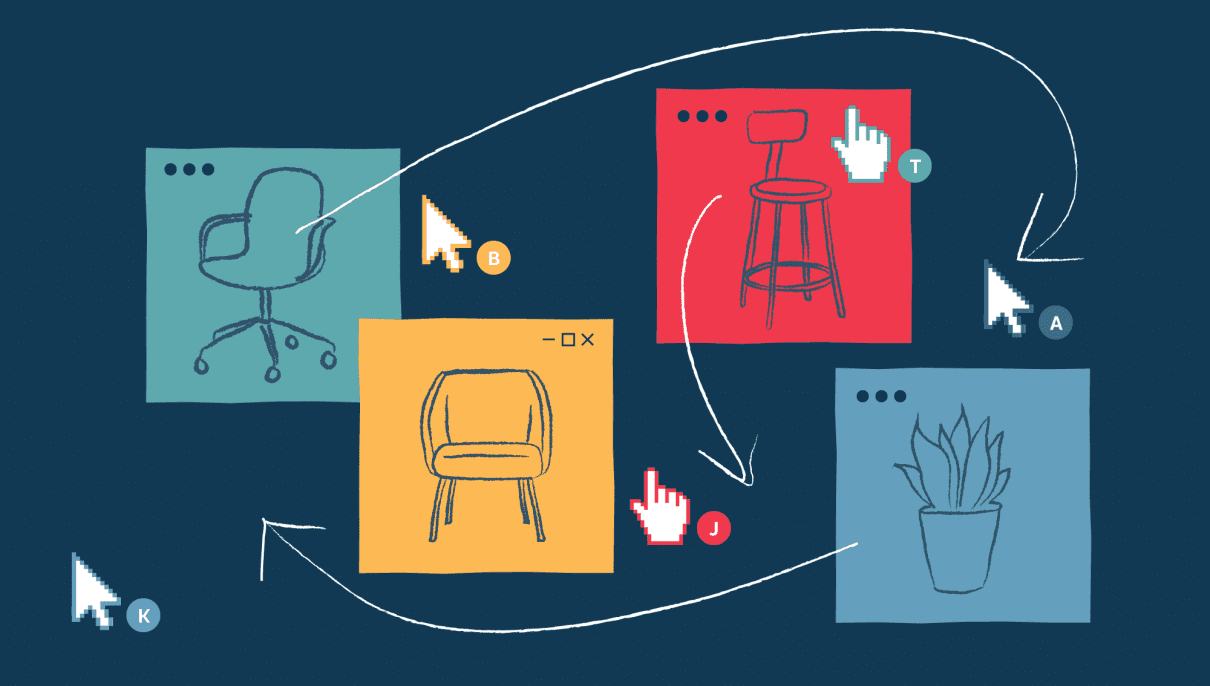Remote Collaboration for Arranging Space
As our local team began planning the return to our office space, we needed a plan for rearranging our office layout in light of social distancing guidelines necessitated by COVID-19. In the past, we gathered together in a conference room or around a whiteboard wall for this task. Or we just started moving furniture around to see how it felt. This time would have to be different. This time we would need dedicated remote collaboration space to plan how we’d rearrange our physical space.
Finding the right tool
Thankfully we had been exploring some remote collaboration tools to help recreate some of the benefits of shared physical space. We recently tested Milanote for collaborative visual tasks like assembling mood boards, and Miro for facilitating remote workshop type activities. Both tools have features that allow for organizing (and reorganizing) ideas spatially. This is a key ingredient for recreating some of the magic of a shared physical space.
For our office layout, we chose to use a collaborative Miro board and run this a bit like an asynchronous, remote workshop.
Creating space for remote collaboration
To start, we created a template that had two necessary components: a floor plan of the office space, to scale, and multiple copies of desk diagram demarcated with social distancing safe zones, also drawn to scale. And we set some parameters and principles to guide the exploration. The goal was to arrive at an office layout that allowed for socially distant socializing and collaboration. The principles and goals were noted alongside the floor plan to keep them always at hand.
With the basic template created, we set up individual workspaces for each team member to test desk arrangements. We each had several days to explore on our own, playing games of Tetris with our office furniture between project work. All the layouts were visible to the team – this allowed for some cross-pollination to occur. We saw clever ideas for efficient use of space used in one layout cascade across others.
Once everyone had some time to test their ideas, we came together to share our layouts and discuss. This discussion was invaluable as we each found insights that altered how we approached our own solution to the challenge. And the collaborative tools in Miro allowed us to test some of these new ideas together during our video meeting. We gave everyone a few additional days to make some revisions based upon insights gleaned, and then reconvened for a dot voting exercise to identify the layout the team felt best achieved our objectives.
What we learned
Having a tool to capture and spatially organize your team’s ideas in a virtual setting can do a lot for recreating that sense of shared space.
Group brainstorming can have fantastic outcomes, but one of its shortfalls is it frequently doesn’t allow for individual time to think and explore. Those who prefer time to process and develop their ideas are often uncomfortable inserting themselves into live brainstorming sessions. Their ideas often go unspoken and unappreciated. Building in some time on the front end for individual processing is crucial to ensure teams don’t miss out on these ideas. And it can help inject some initial quality into the developing ideas of all members of the team.
Thankfully, one of the advantages to working remotely is the opportunity to rethink normal work activities like group brainstorms.
From our experience facilitating a remote workshop with our team, we found there is a general pattern to effective group brainstorming. Start with a group briefing, allow for individual time to think and process, then gather together to discuss and develop ideas further. This pattern can be built into remote collaboration activities – or completely live brainstorms, too. It requires some forethought and initial setup, but it pays dividends when you see the outcomes.
Brady is a graphic designer at Matt Jensen Marketing.







